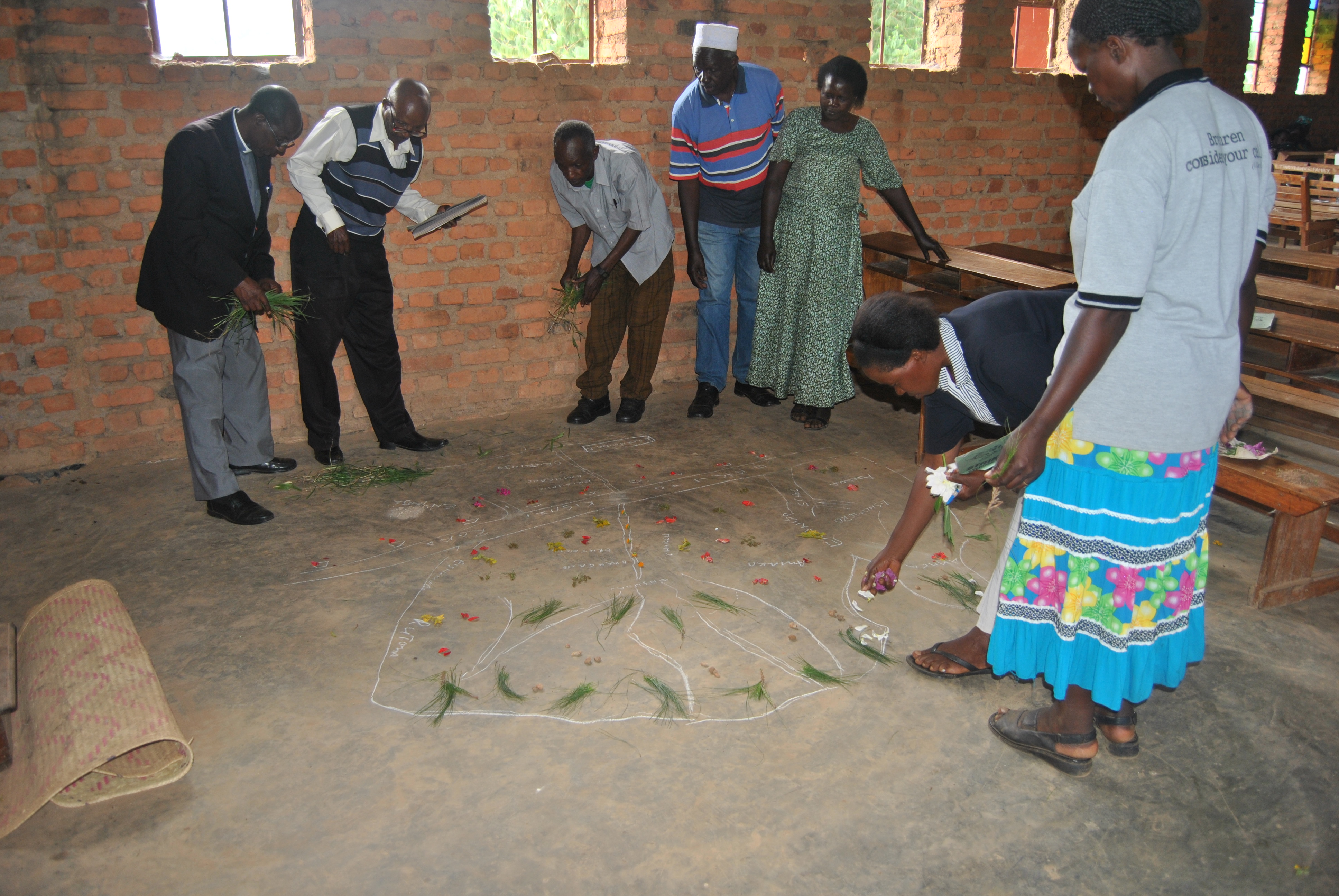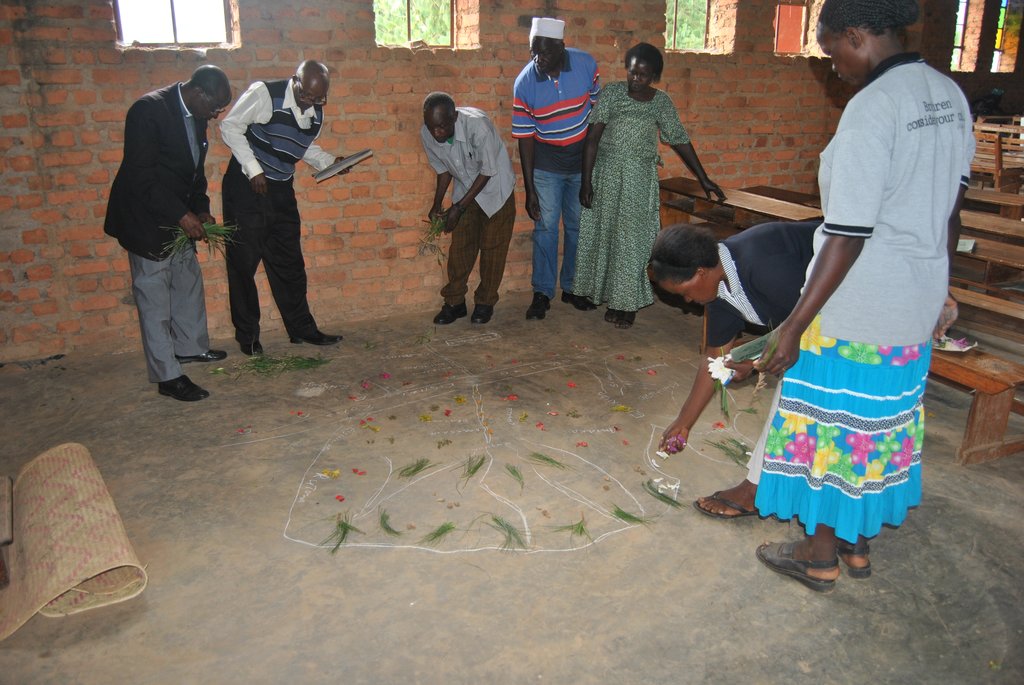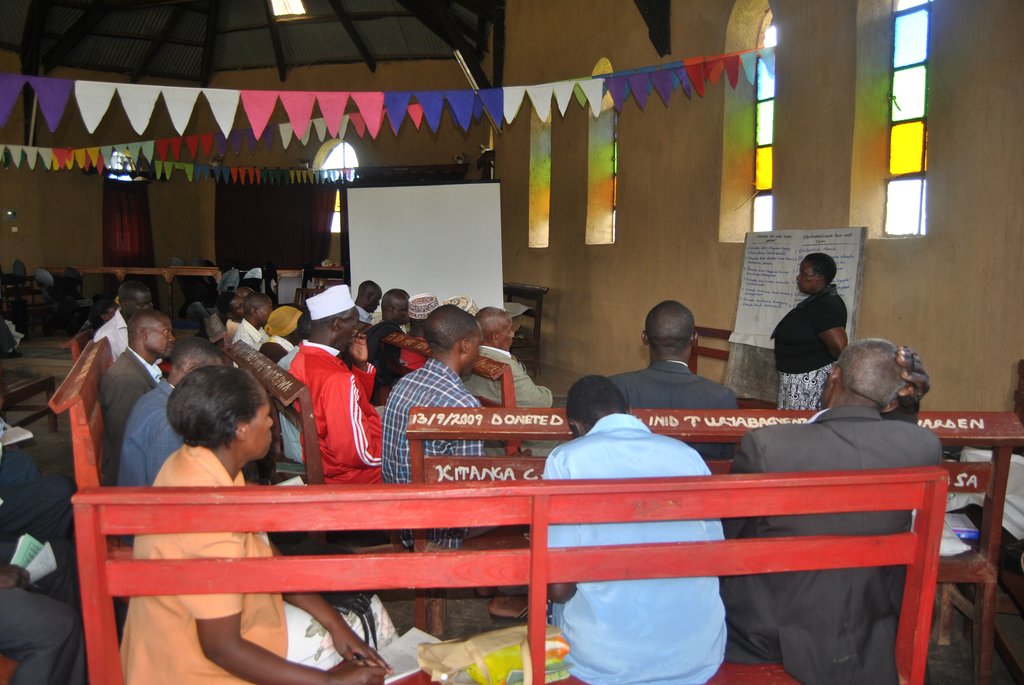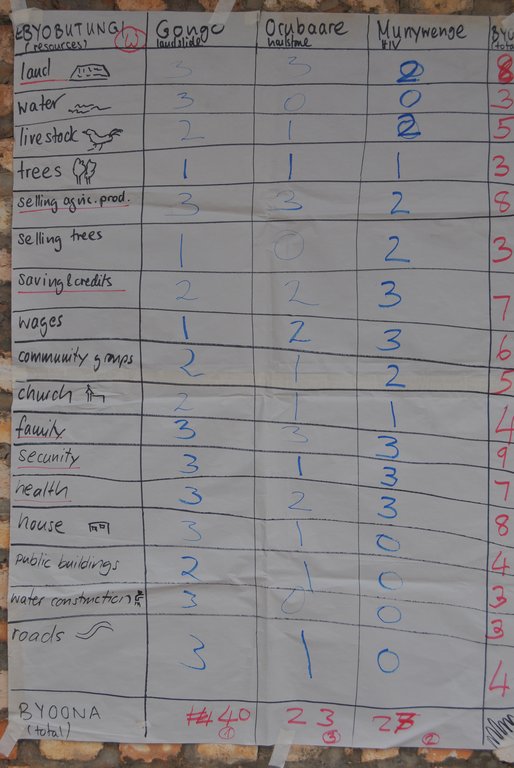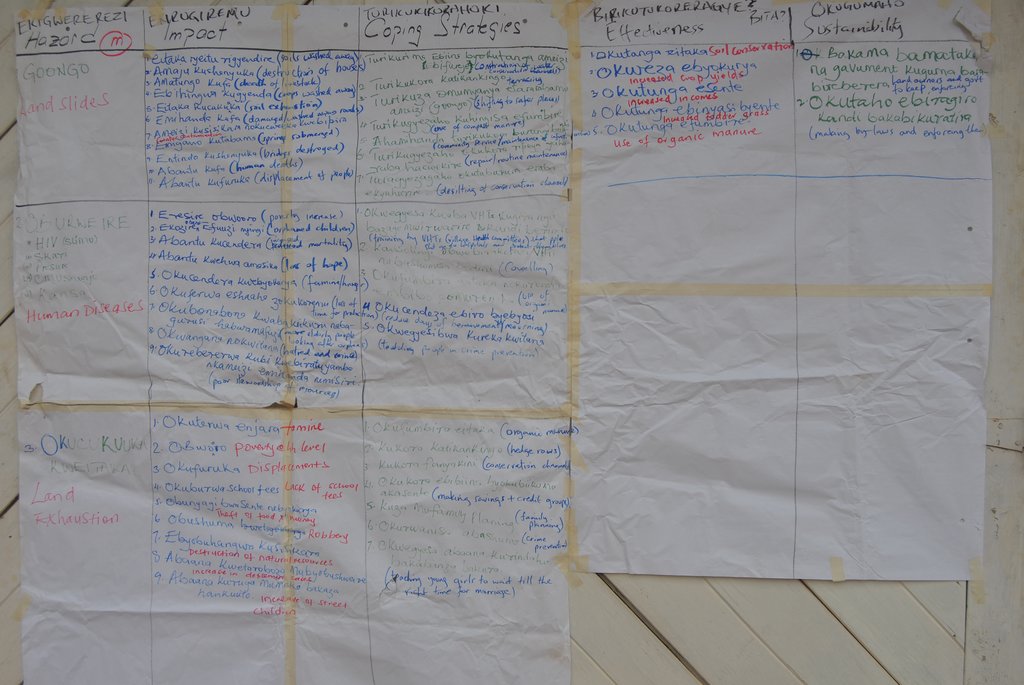Catchment Based Integrated Water Resources Management [乌干达]
- 创建:
- 更新:
- 编制者: Philip Tibenderana
- 编辑者: –
- 审查者: Renate Fleiner, Boris Orlowsky
Okurinda ebyobuhangwa
approaches_724 - 乌干达
查看章节
全部展开 全部收起1. 一般信息
1.2 参与方法评估和文件编制的资源人员和机构的联系方式
关键资源人员
SLM专业人员:
有助于对方法进行记录/评估的项目名称(如相关)
Book project: where people and their land are safer - A Compendium of Good Practices in Disaster Risk Reduction (DRR) (where people and their land are safer)有助于对方法进行记录/评估的机构名称(如相关)
Tear Fund Switzerland (Tear Fund Switzerland) - 瑞士1.3 关于使用通过WOCAT记录的数据的条件
编制者和关键资源人员接受有关使用通过WOCAT记录数据的条件。:
是
1.4 SLM技术问卷的参考
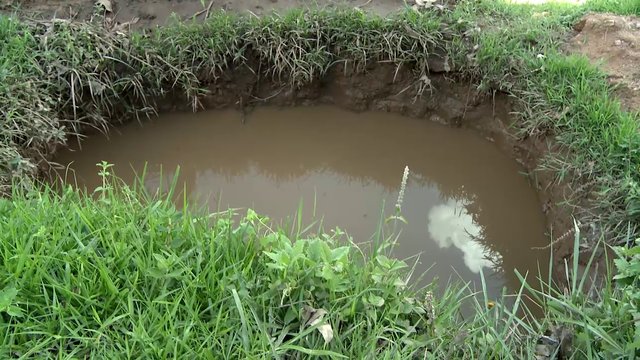
Percolation pits [乌干达]
A percolation pit is an excavation in the ground in the pathway of water runoff to intercept the flow of the water and thereby reduce erosion and destruction of crops, settlements and other infrastructure downstream
- 编制者: Philip Tibenderana
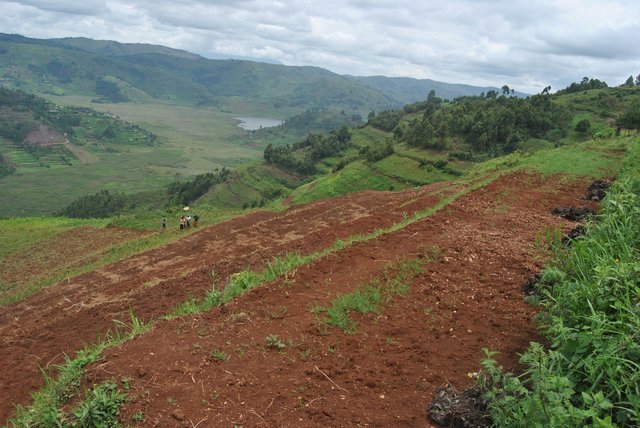
Bench Terracing [乌干达]
A bench terrace is an artificial horizontal strip dug across a steep landscape, with a riser ranging between 30 and 45 degrees. Bench terraces are constructed in series and help to minimize land degradation by rainwater runoff
- 编制者: Philip Tibenderana
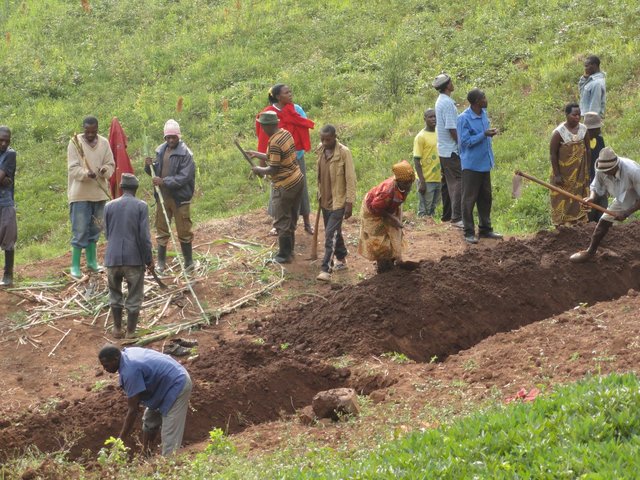
Soil and Water Conservation Channels [乌干达]
A soil and water conservation channel is an excavated trench along the contour with tie bands after an interval to trap water and soil which are being washed down the slopes by a downpour
- 编制者: Philip Tibenderana
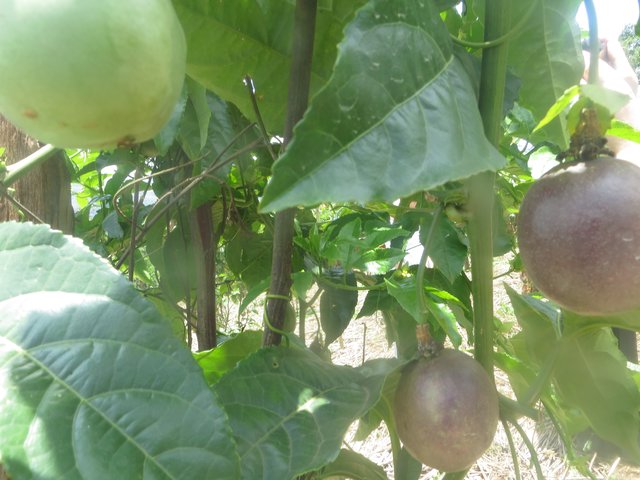
Farming God's Way [乌干达]
Farming Gods Way is a method of farming which aims to preserve soil structure through minimum tillage, mulching with grass or plant stalks and use of organic manure for improved crop yields.
- 编制者: Philip Tibenderana
2. SLM方法的描述
2.1 该方法的简要说明
Catchment based integrated water resources management is a process which promotes the coordinated development and management of water, land and related resources in order to maximise economic and social welfare in an equitable manner without compromising the sustainability of vital eco systems
2.2 该方法的详细说明
该方法的详细说明:
This approach brings together all the people who are using the land resources within a defined area
This approach entails community mobilisation, organisation and empowerment to jointly harness and manage their resources sustainably for optimum benefits
The process begins when a request from a community is received. This is followed by an assessment to ascertain the needs and the level of involvement of the community.
The community is then mobilised through the religious and local leaders. The leaders then facilitate formation of local environment committees which are trained
The local environment committees convene community meetings and the community does the hazard and vulnerability assessments, and identifies the adaptation strategies. The community then identifies resource user groups which are trained and supported to implement the technologies
The stakeholders involved were the church and local leaders who do the mobilisation, government technical staff for technical backup and supports enforcement of by-laws, community members who attend meetings and trainings and participate in applying the technologies, Kigezi Diocese Water and Sanitation Programme (KDWSP) which provides technical expertise and subsidises implementation of the technologies, development partners who provide funding and capacity building for implementation staff, other development agencies who share experiences
The land users appreciate the approach because it puts them at the forefront of the planning and implementation to address their problems. However, the approach is demanding in terms of time
2.3 该方法的照片
2.5 采用该方法的国家/地区/地点
国家:
乌干达
区域/州/省:
South Western Region
有关地点的进一步说明:
Rubaya Sub County, Kabale District
2.6 该方法的开始和终止日期
若不知道准确的年份,请注明该方法的大致开始日期。:
不到10年前(最近)
2.7 方法的类型
- 基于项目/方案
2.8 该方法的主要目的/目标
The main aim of the approach is to ensure that the water and related resources provide a source of livelihood to the people while being preserved for use by future generations and reducing resources based conflicts
2.9 推动或妨碍实施本办法所适用的技术的条件
社会/文化/宗教规范和价值观
- 启动
There are social groups in the communities which all community members highly conform to. Community members also are very religious and therefore the church is a very effective convener
财务资源和服务的可用性/可得性
- 阻碍
People are poor because they depend on susbsistence farming, and with limited land, there is low productivity and much of what is produced is consumed
机构设置
- 启动
Government and church structures are well established to the grass root and they are in support of development programmes
- 阻碍
Although good laws exist, the level of enforcement is low
参与者的的协作/协调
- 启动
Collaboration with other development agencies fosters learning and sharing of experiences and knowledge
法律框架(土地使用权、土地和水使用权)
- 启动
People own land in a manner that they are free to use it the way they want
- 阻碍
On the contrary, some people may not easily adopt th technology since it is at their will
政策
- 启动
Relevant policies are in place
土地治理(决策、实施和执行)
- 阻碍
Although policies are in place, they are not easily enforced
了解SLM,获得技术支持
- 启动
This approach builds on already existing local knowledge and existence of government technical teams
市场(购买投入,销售产品)和价格
- 阻碍
The farmers have low purchasing power due to poor incomes
工作量、人力资源可用性
- 阻碍
The youth and men who are the most energetic are not active and spend most their time gambling and drinking and much of the work is being done by women
3. 相关利益相关者的参与和角色
3.1 该方法涉及的利益相关者及其职责
- 当地土地使用者/当地社区
Attending meetings and trainings and participating in applying the technologies. Mostly women aged between 16 and 60
- 社区组织
KDWSP and existing community groups like stretcher groups, local savings and credit groups
Help to convene community members for meetings and trainings and enforcing by-laws
- SLM专家/农业顾问
Training and providing technical knowledge and overseeing and supervision of technologies
- 研究人员
Provide resource materials
- 教师/学龄儿童/学生
Teachers disseminate information, school children (age 8 - 15) engage in music, dance and drama with messages relating to SLM
- NGO
Sharing experiences
- 私营部门
Supplying inputs and provide market for the produce
- 地方政府
Mobilisation, enforcement of policies and provide technical support
- 国家政府(规划者、决策者)
Make policies and guidelines and provide an enabling environment
- 国际组织
Provide funding and capacity building for implementing agencies
3.2 当地土地使用者/当地社区参与该方法的不同阶段
| 当地土地使用者/当地社区的参与 | 指定参与人员并描述活动 | |
|---|---|---|
| 启动/动机 | 自我动员 | When disasters hit the communities, they organised themselves, through their leaders, and approached KDWSP to support them overcome these and similar disasters |
| 计划 | 互动 | Following the hazard and vulnerability assessments, KDWSP in partnership with the Ministry of Water and Environment, explained to communities the different technologies and their benefits and the community decided on which technologies to adopt |
| 实施 | 互动 | The SLM specialists guided the land users on how to implement the technologies |
| 监测/评估 | 互动 | The SLM specialists, together with community elected representatives carried out the monitoring of the technologies |
3.4 有关SLM技术选择的决策
具体说明谁有权决定选择要实施的技术:
- 主要是SLM专家,咨询土地使用者之后
明确做出决策的依据:
- 对充分记录的SLM知识进行评估(基于证据的决策)
4. 技术支持、能力建设和知识管理
4.1 能力建设/培训
是否为土地使用者/其他利益相关者提供培训?:
是
明确受训人员:
- 土地使用者
- 现场工作人员/顾问
培训形式:
- 在职
- 农民对农民
- 示范区域
- 公开会议
涵盖的主题:
Water resources management policies, regulations and guidelines, community based catchment planning, principles of IWRM, IWRM implementation approaches, roles and responsibilities, soil and water conservation practices and conservation farming, soil and water conservation practices and conservation farming, setting out and construction of soil and water conservation channels (use of the A-frame), construction of percolation pits, construction of bench terraces
4.2 咨询服务
土地使用者有权使用咨询服务吗?:
是
指明是否提供了咨询服务:
- 在土地使用者的土地上
- 在固定中心
说明/注释:
There is a National Agricultural Research Organisation located within the District where land users can go for advisory services. There are also agricultural extension workers at sub county level and project staff who regularly follow up the land users
4.3 机构强化(组织发展)
是否通过这种方法建立或加强了机构?:
- 是,适度
具体说明机构的强化或建立程度:
- 本地
说明机构、角色和职责、成员等。:
The formed local environment committees are comprised of community representatives, local council leaders, sub county leadership and church leaders. They are responsible for mobilising communities, planning, implementation and monitoring of the technologies
具体说明支持类型:
- 能力建设/培训
- 设备
4.4 监测和评估
监测和评估是该方法的一部分吗?:
是
注释:
There is routine field follow up made by KDWSP and the local environment
若是,该文件是否用于监测和评估?:
是
注释:
This information will be used as a baseline for tracking progress and measuring impact
4.5 研究
研究是该方法的一部分吗?
否
5. 融资和外部物质支持
5.1 该方法中SLM组成部分的年度预算
说明该方法中SLM部分的年度预算,单位为美元:
150000.00
注释(例如主要的资助来源/主要捐助者):
Tearfund Switzerland
5.2 为土地使用者提供财政/物质支援
土地使用者是否获得实施该技术的财政/物质支持?:
是
如果是,请具体说明支持的类型、条件和提供者:
Tools for construction of the technologies, seedlings, setting up demonstration sites, training
5.3 对特定投入的补贴(包括劳动力)
- 劳动力
| 程度如何 | 对补贴做出具体说明 |
|---|---|
| 部分融资 | Wages to people who construct the demonstration bench terraces. The beneficiary land user provides food for the laborers |
- 设备
| 具体说明哪些投入得到了补贴 | 程度如何 | 对补贴做出具体说明 |
|---|---|---|
| 工具 | 充分融资 | For excavation of conservation channels and percolation pits |
- 农业
| 具体说明哪些投入得到了补贴 | 程度如何 | 对补贴做出具体说明 |
|---|---|---|
| 种子 | 充分融资 | For establishment of hedge rows |
如果土地使用者的劳动力是一项重要的投入,那么是不是:
- 自愿
注释:
Labour for excavation of conservation channels and percolation pits was voluntary while labour for construction of demonstration bench terraces was paid in cash
5.4 信用
是否根据SLM活动的方法给予信用值?:
否
5.5 其它激励或手段
是否有其他激励措施或工具用于促进SLM技术的实施?:
否
6. 影响分析和结论性陈述
6.1 方法的影响
该方法是否有助于当地土地使用者,提高利益相关者的参与度?:
- 否
- 是,很少
- 是,中等
- 是,支持力度很大
Land users can now do the technologies by themselves, conduct meetings, enforce their own by-laws
这种方法是否有助于基于证据的决策?:
- 否
- 是,很少
- 是,中等
- 是,支持力度很大
Management structures are now able to meet regularly to make decisions based on observations and lessons learnt during the implementation of the technologies
该方法是否帮助土地使用者实施和维护SLM技术?:
- 否
- 是,很少
- 是,中等
- 是,支持力度很大
Subsidy as part of the approach was a major support in helping to implement the technologies
该方法是否提高了SLM的协调性和成本效益?:
- 否
- 是,很少
- 是,中等
- 是,支持力度很大
The established community management structures are linked to sub county technical staff for technical support and other service providers like other agencies
该方法是否调动/改善了使用财务资源实施SLM的途径?:
- 否
- 是,很少
- 是,中等
- 是,支持力度很大
The approach focussed more on adoption of the technologies and did not go to the extent of training land users to mobilise financial resources
该方法是否提高了土地使用者实施土地管理的知识和能力?:
- 否
- 是,很少
- 是,中等
- 是,支持力度很大
Trained land users are now able to replicate the technologies with little or no external support
该方法是否提高了其他利益相关者的知识和能力?:
- 否
- 是,很少
- 是,中等
- 是,支持力度很大
Local government leaders, churches, CSOs and community leaders were equipped with knowledge on SLM and exposed to best practices
该方法是否建立/加强了机构、利益相关者之间的合作?:
- 否
- 是,很少
- 是,中等
- 是,支持力度很大
The stakeholders occasionally meet to discuss SLM matters and other issues are discussed in that forum
该方法是否缓解了冲突?:
- 否
- 是,很少
- 是,中等
- 是,支持力度很大
Land users work together in implementation of SLM technologies which promotes cohesion
该方法是否有助于社会和经济弱势群体?:
- 否
- 是,很少
- 是,中等
- 是,支持力度很大
The approach did not specifically target disadvantaged groups
该方法是否改善了性别平等并赋予女性权力?:
- 否
- 是,很少
- 是,中等
- 是,支持力度很大
Women have been targeted and considered to be part of the management committees or host demonstrations
该方法是否鼓励年轻人/下一代土地使用者参与SLM?:
- 否
- 是,很少
- 是,中等
- 是,支持力度很大
SLM messages were disseminated through music, dance and drama by school children and youth who are next generation of land users
该方法是否改善了阻碍SLM技术实施的土地使用权/用户权问题?:
- 否
- 是,很少
- 是,中等
- 是,支持力度很大
By-laws formed and guidelines which were provided to the land users have helped in the implementation of the technologies
该方法是否改善了粮食安全/改善了营养?:
- 否
- 是,很少
- 是,中等
- 是,支持力度很大
The SLM have helped to reduce fertile soil loss due to erosion, increase soil moisture content and reduce destruction of crops by surface runoff hence improved productivity
该方法是否改善了市场准入?:
- 否
- 是,很少
- 是,中等
- 是,支持力度很大
The approach did not focus on this aspect
该方法是否改善了供水和卫生条件?:
- 否
- 是,很少
- 是,中等
- 是,支持力度很大
The technologies under this approach protect existing water sources and sanitation facilities from destruction by surface runoff and landslides and replenish sub-surface water sources
该方法是否带来了更可持续的能源使用?:
- 否
- 是,很少
- 是,中等
- 是,支持力度很大
Under this approach other technologies are integrated including energy saving stoves, agro-forestry which aim at sustainable use of the land resources
该方法是否提高了土地使用者适应气候变化/极端情况和减轻气候相关灾害的能力?:
- 否
- 是,很少
- 是,中等
- 是,支持力度很大
The approach has led to increased adoption of the structures that minimise the impact of surface run offs on the farms of land users
该方法是否会带来就业、收入机会?:
- 否
- 是,很少
- 是,中等
- 是,支持力度很大
The approach has resulted in providing training for skilled labour. Beneficiaries are able to sell their labour and the technologies introduced create room for increased productivity from the farms of the land users
6.2 土地使用者实施SLM的主要动机
- 增加生产
The approach delivers multiple technologies which enhance production
- 减少土地退化
Leads to reduction of soil erosion, destruction of infrastructure, improved green cover
- 降低灾害风险
There is reduced risk of mudslides and valley bottom flooding which destroy lives, crops, livestock and infrastructure
- 减少工作量
The terraced areas are easier to work on than slanting slopes
- 支付/补贴
The subsidies reduce the initial investment costs
- 规章制度(罚款)/执行
Some of the land users fear to be fined and thus resort to implement the SLM
- 声望、社会压力/社会凝聚
Some of the land users agree on what should be done and adhere to group set regulations
- 环境意识
Depends on the historical climate trends and creates a sense of appreciating the realities in the occurrences which motivates them to work to curb them down
- 提高SLM知识和技能
Land users trained get motivated to put into practice what has been taught
6.3 方法活动的可持续性
土地使用者能否维持通过该方法实施的措施(无外部支持的情况下)?:
- 是
若是,请说明如何维持:
After learning from the demonstration technologies a number of land users have already adopted the technologies without any external support. It is hoped that this practice will continue after realising the benefits
6.4 该方法的长处/优点
| 土地使用者眼中的长处/优势/机会 |
|---|
| The approach strengthens the ability of land users coming together and working together |
| Increases land users capacity to put resources, which were thought to be useless, to better use |
| Creates more opportunities (knock-on effect), for example brick making arising from water retained in the dug percolation pits, silt in percolation pits can be used as manure and construction material like sand, goat rearing from planting hedge rows, manure from goat rearing |
| 编制者或其他关键资源人员认为的长处/优势/机会 |
|---|
| The approach addresses a wide range of concerns at once for example the social economic and the environmental issues |
| It incorporates social and environmental considerations directly into policy and decision making |
| It directly involves all stakeholders |
| The approach creates a balance between water being used as a resource and at the same time being preserved |
6.5 该方法的弱点/缺点以及克服它们的方法
| 土地使用者认为的弱点/缺点/风险 | 如何克服它们? |
|---|---|
| The approach requires a lot of effort in terms of understanding it and implementing it | Continuous sensitization and training |
| Some of the benefits of this approach are long term | Continuous encouragement and exposure to successful areas and incorporating initiatives that realise short term benefits to keep the land users going |
| 编制者或其他关键资源人员认为的弱点/缺点/风险 | 如何克服它们? |
|---|---|
| The approach is complex in the sense that it is multi-sectoral (cuts across agriculture, health, environment, engineering and governance | Creating sharing platforms from the lowest to the highest level which enable continuous learning |
| Requires a lot of effort from diverse stakeholders - policy makers, policy enforcers, facilitators and implementers | Exposure of the stakeholders to successful areas helps them to appreciate the approach and adopt it |
7. 参考和链接
7.1 方法/信息来源
- 实地考察、实地调查
- 与土地使用者的访谈
- 与SLM专业人员/专家的访谈
- 根据报告和其他现有文档进行编译
Periodic programme reports
7.2 参考可用出版物
标题、作者、年份、ISBN:
Kigezi Diocese Water and Sanitation Programme, IWRM Annual Report (April 2015 - March 2016)
可以从哪里获得?成本如何?
www.kigezi-watsan.ug
7.3 链接到网络上可用的相关信息
标题/说明:
Integrated Water resources Management
URL:
www.un.org/waterforlifedecade/iwrm.shtml
标题/说明:
Integrated Water Resources Management in Uganda
URL:
www.mwe.go.ug
链接和模块
全部展开 全部收起链接

Percolation pits [乌干达]
A percolation pit is an excavation in the ground in the pathway of water runoff to intercept the flow of the water and thereby reduce erosion and destruction of crops, settlements and other infrastructure downstream
- 编制者: Philip Tibenderana

Bench Terracing [乌干达]
A bench terrace is an artificial horizontal strip dug across a steep landscape, with a riser ranging between 30 and 45 degrees. Bench terraces are constructed in series and help to minimize land degradation by rainwater runoff
- 编制者: Philip Tibenderana

Soil and Water Conservation Channels [乌干达]
A soil and water conservation channel is an excavated trench along the contour with tie bands after an interval to trap water and soil which are being washed down the slopes by a downpour
- 编制者: Philip Tibenderana

Farming God's Way [乌干达]
Farming Gods Way is a method of farming which aims to preserve soil structure through minimum tillage, mulching with grass or plant stalks and use of organic manure for improved crop yields.
- 编制者: Philip Tibenderana
模块
无模块


